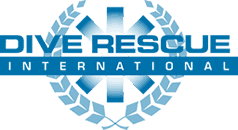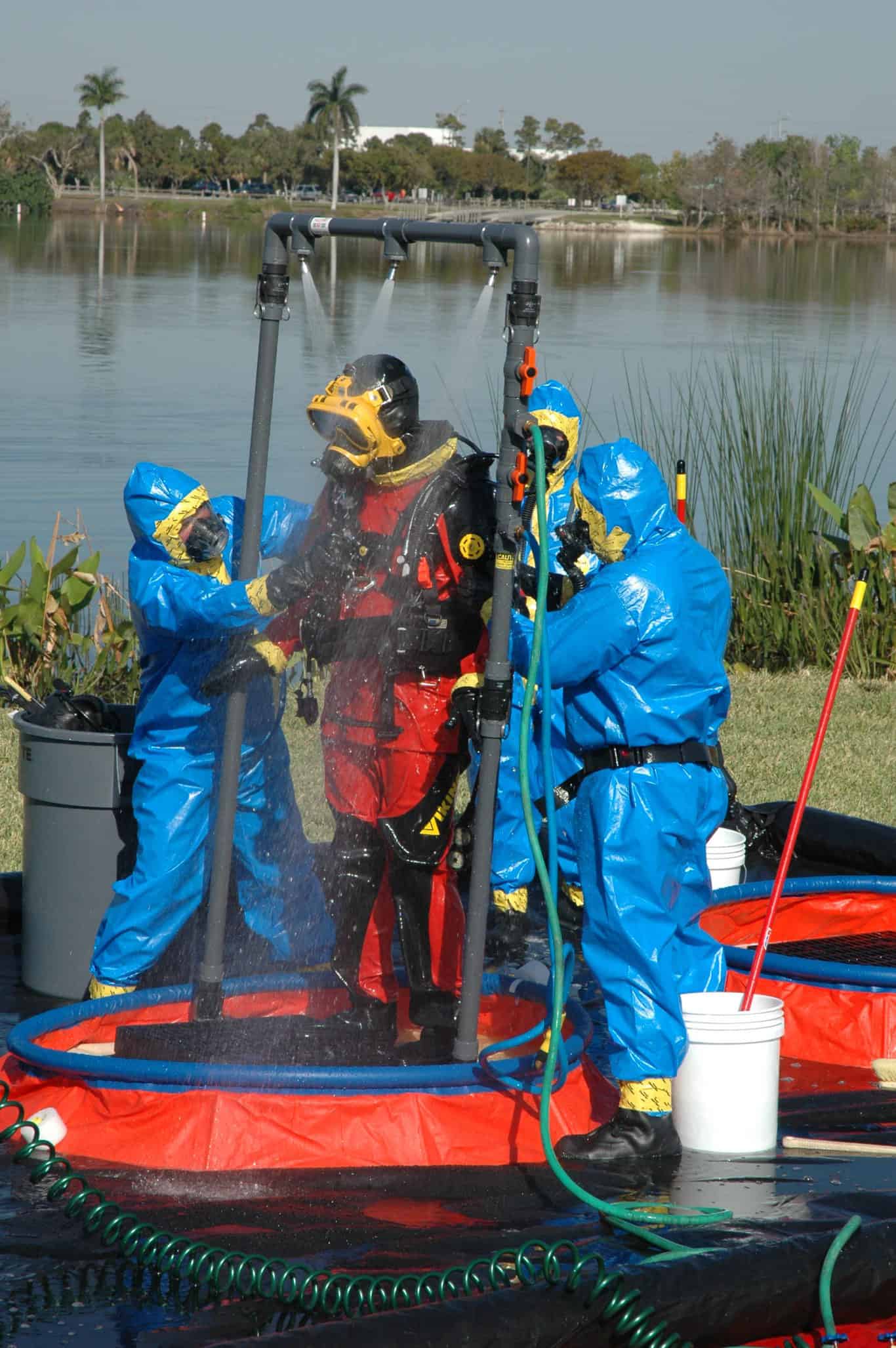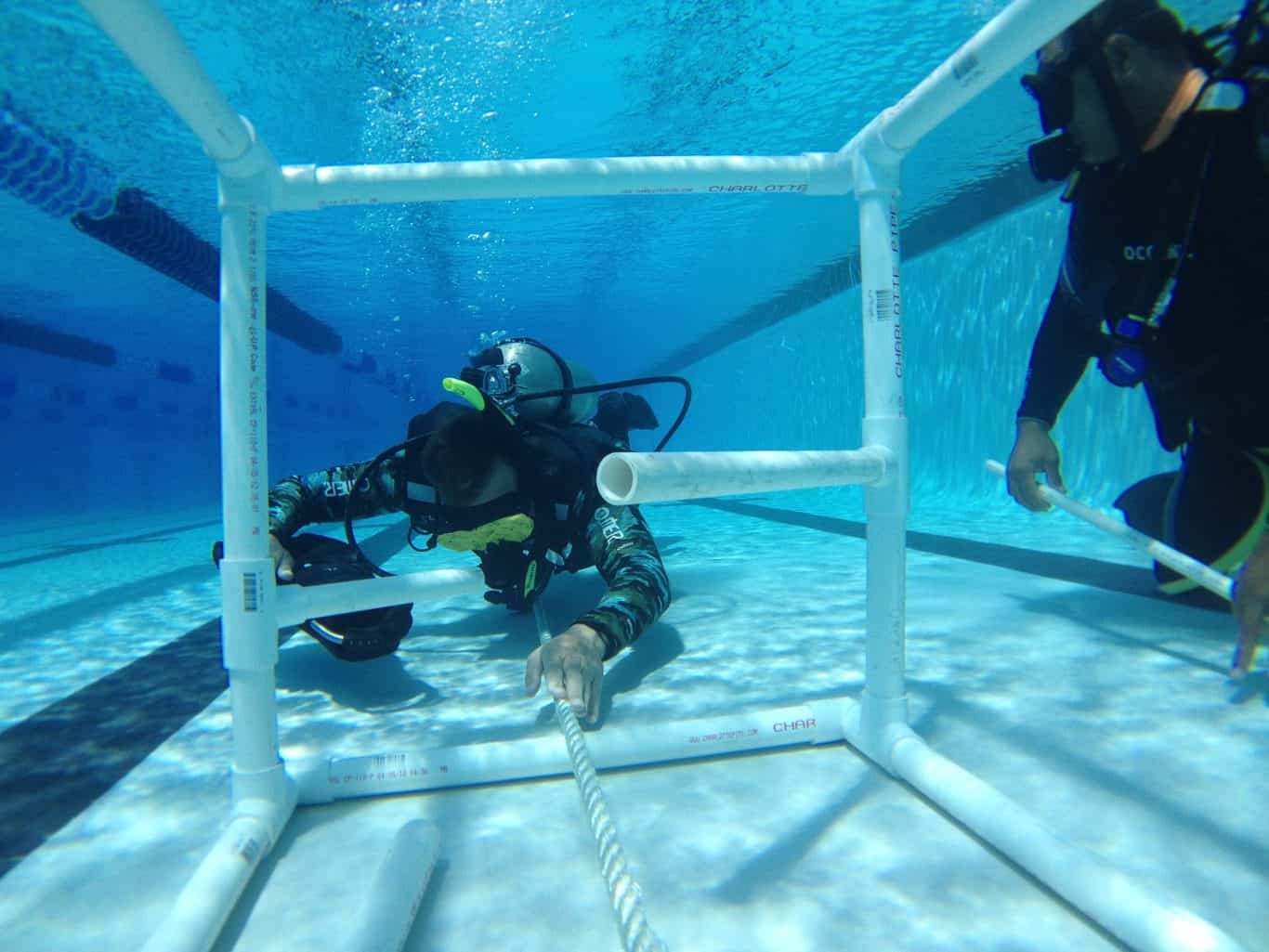Two important Dive Rescue II topics will be offered in Hialeah, FL: Critical Skills Diver and Hazmat Dive Operations this October.
Critical Skills Diver training prepares Public Safety Divers (PSDs) to appreciate repetitive skills training
as a means to improve in-water comfort and competence. PSDs gain muscle memory, stress survival
responses, and achieve resistance against many stressors faced while diving. Proper response to key
underwater emergencies are examined and practiced. Student skill level evolves through repetition of
familiar and unfamiliar challenges. Simply, this course introduces the knowledge and skills that help PSDs
to develop the ability to prevent and/or survive a diving emergency.
Key training topics and the associated objectives include:
DIVER LIMITS
• Define diver limits
• Identify diver skills
STRESS
• Define the different stages of diver stress
• Describe the various scuba diving related stressors
• Explain the different signs of stress a diver can exhibit
• Describe the physiological effects of stress
PANIC
• Define the panic reaction and the physiological and behavioral symptoms that accompany it
• Discuss what factors can lead to diver panic
STRESS MANAGEMENT TECHNIQUES
• Examine diver fatality profiles
• Examine human cognitive Systems
• Examine human physiological systems
• Fitness, Confidence, and Competence training
• Scene evaluation
STRESS INOCULATION
• In-water stress inoculation training
BE SURE TO BRING
Recreational or ‘sport’ dive gear is suggested for this course but participants may atttempt to use ‘mission ready’ dive rescue gear appropriate to their team or AHJ
including: Exposure Protection, Full Face Mask, Buoyancy Control Device, Regulator, Depth Gauge, SPG,
Alternate Air Source, Compass, 2 Cutting tools, Weight System, and Fins.
Each student must have access to one full scuba cylinder per pool session.
DAY 1
8:00-8:30 Welcome and Registration, Introduction of Instructors & Students, Course Overview
and Objectives
8:30-10:30
Academic Presentation – Literature Review; Diver Limits; Stress & Anxiety; Human
Systems; Training Techniques – Confidence, Competence, and Fitness; Scene
Management; Specific stressors – Air, Entanglement, and Workload
10:30-11:30 Break
11:30-4:00 Pool Session # 1
Scuba skills review
Increasing basic skill challenges allowing divers to practice proper stress response
techniques, control mind set, and breathing.
DAY 2
8:00-11:00 Pool Session # 2
Increasing basic skill challenges allowing divers to practice proper stress response
techniques, control mind set, and breathing. Addition of black out masks.
Buddy Team exercises with increasing cardiovascular and skill demands
11:00-12:00 Break
12:00-4:00 Pool Session # 3
Continuous Buddy Team exercises
Confidence Course and Obstacle Mitigation
Schedule is subject to change
PREREQUISITES
All students must be a member of a public safety agency and at least 18 years of age. Students must
read and complete a RSTC medical statement prior to attending class. Any diver answering yes to any
contraindication must have the form signed by a physician. Diving students must have proof of open water
certification.
This program is designed for personnel who are physically fit. Participants are encouraged to participate
after successfully completing the IADRS Watermanship Test or testing to a fitness level of 13 MET
(Metabolic Equivalents) or greater. Participants with aerobic fitness questions or concerns should consult
their physician prior to in-water training.
Haz-Mat Diving is Dive Rescue International’s renowned three day (24 hour) training program for certified
divers and surface support personnel.
Contaminated water causes additional hazards and could possibly even stop a rescue/recovery operation.
Almost all water is contaminated. Dive teams need to be able to recognize, identify and operate in polluted
water. During this program dive team members will learn to operate in a cost-effective and proactive
manner.
This program is presented in the classroom, pool and open-water to allow students to become familiar
with the techniques prior to field scenarios. Successful completion of this program is measured in class
participation and an end of program comprehensive test.
Key training topics and the associated objectives include:
DIVING IN CONTAMINATED WATER
• Identify polluted water considerations and equipment expectations
• Define diver exposure during active spills, routine operations, and clean-up phases
• Identify the dive requirements and make the decision of “Dive/No Dive”
CONTAMINANTS AND HAZARDS
• Define the different types of contaminants: biological, chemical, radiation, and thermal
• Describe each contaminant’s hazard level, exposure limits, and lethal concentrations/dosages
• Explain equipment performance and identify the different levels of personal protection equipment
SCUBA SYSTEMS FOR DIVING IN CONTAMINATED WATER
• Identify specialized equipment for diving in contaminated water
• Discuss different types of masks, communications, suits, and other protective gear
SURFACE-SUPPLIED AIR SYSTEMS
• Identify components of surface-supplied air systems
• Define advantages of surface-supplied air systems over scuba gear
DIVE PLANNING
• Define the Risk/Benefit Factor
• Evaluate conditions and possible hazardous contaminants present at the dive site
• Make the “Dive/No Dive” decision
• Define the work zone designations: exclusion area, contamination reduction area, and support area
• Explain decontamination processes including on-site decontamination, removal of equipment and
definitive decontamination
DIVING PROCEDURES
• Describe dressing the diver, dry suit diving techniques, and scuba operations
• Differentiate between scuba operations and surface-supplied air operations
DECONTAMINATION
• Identify decontamination and rinse solutions
• Define the different levels of personal protection equipment
• Describe protective capabilities of non-diver garments
• Name the basic decontamination recommendations
• Explain the difference between gross decontamination vs. definitive decontamination
• Describe the procedure for packaging and labeling contaminated gear
EQUIPMENT MAINTENANCE
• Describe the correct equipment maintenance procedures for suits, masks/helmets, umbilicals, and
air manifolds
PREREQUISITES
All students must be a member of a public safety agency and at least 18 years of age. Students must
read and complete a RSTC medical statement prior to attending class. Any diver answering yes to any
contraindication must have the form signed by a physician. Diving students must have proof of open water
certification.
This program is designed for personnel who are physically fit. Participants are encouraged to participate
after successfully completing the IADRS Watermanship Test or testing to a fitness level of 13 MET
(Metabolic Equivalents) or greater. Participants with aerobic fitness questions or concerns should consult
their physician prior to in-water training. Participants who have poor aerobic fitness may attend this program
as surface support personnel with the approval of the instructor.
BE SURE TO BRING
All students must bring: US Coast Guard approved P.F.D. with knife and whistle, adequate clothing and
protection from the environment and pen and paper for note-taking and sketching. Diving students must
provide their own equipment: Scuba regulator: recently serviced and environmentally protected with
alternate air source (i.e.: octopus, Air II, etc.), timing device, depth and submersible pressure gauges, BC
with oral/power inflator, two tanks with current Hydro & VIP, mask, snorkel, fins, weight belt and two cutting
tools (knife, wire cutters, or trauma shears.)
Schedule
DAY 1
8:00 Registration – Hold Harmless Agreements, – Class Schedule and Overview of Diving
in Contaminated Water – Case History #1
9:00-10:00 Contaminants and Hazards – Biological Contaminant – Chemical Hazards –
Radiation Thermal Hazards – Case History #2
10:00-11:00
Scuba Systems for Diving in Contaminated Water: Conventional Scuba, Full-Face
Mask – Communications: Hard Wire vs Wireless Comms – Dry Suits: Dry Suit
Hoods, Dry Suit Zippers, Dry Suit Valves and Inflator Valves, Exhaust Valves – Hand
Protection: Cuff Rings, Dry Gloves & Mittens – Dry Suit Underwear: Wooley Bears,
Thinsulate, Open Cell Foam, Polartec – Dry Suit Accessories: Fins, Harness w/
weight system – Case History #3
11:00-12:00
Surface Supplied Diving – Components of Surface Supplied Diving: Compressed
Air Supply, Diver’s Air Manifold System, Top-Side Communications System, Diver’s
Umbilical, Dive Mask, Dive Helmets, Bailout System – Case History #4
12:00-1:00 Lunch
1:00-2:00
Dive Planning – Zone Management System – Operating from a boat – Dive Team
Responsibilities: Dive Supervisor, Dive Manifold Operator, Dive Tender, Diver,
Stand-by Diver/90% Diver, Stand-by Tender/90% Tender – Additional Dive Team
Members: Inoculations/Med History – Job Hazard Analysis: Depth Decompression,
Visibility, Currents, Emergency Aid, Planning for Decontamination – Case History #5
2:00-3:00
Diving Techniques: Dressing the Scuba Diver, Leak Testing, Tending Diver,
Communications, Rules of Thirds – Full-Face Mask Techniques: Dry Suit Diving
Techniques, The Contaminated Environment, Full-Face Mask Emergencies, Dry
Suit Emergencies, Surface Supplied Diving: Setting up the System, Leak Testing,
Tending Diver, Diver’s Air Manifold, Dive Supervisor on Site, Diver’s Techniques,
Emergency Procedures for Surface Supplied Air – Case History #6
3:00-5:00
Decontamination: On Site DeCon – setup – Gross DeCon of Diver at Water’s Edge,
Tender Escorts Diver to DeCon Area, Diver and Tender DeCon – 3-Part DeCon –
Equipment Removal – Equipment DeCon or Disposed – Definitive DeCon – Case
History #7
Dive Rescue International (800) 248-3483 DiveRescueIntl.com
DAY 2 Scenario #1
8:00-9:30 Set up DeCon Stations: Hot, Support Zone, Contamination Radiation Zone
9:30-10:00 Dive Briefing with Divers, Tenders, Decontamination Team and Haz Mat Team
10:00-10:30 Break – Prep Dive Gear
10:30-11:00 Start Dive Operation: Pre-dive Neuro – Pre-dive Equipment Check – Backup Divers
and Tenders Ready – Diver Enters Water
11:00-12:00
Diver Out of Water: Gross DeCon at water edge – Tender Escorts Diver to DeCon
Line – DeCon Diver and Tender (3 stages of DeCon) – Definitive DeCon – Diver
Enters Support Zone
12:00-1:00 Lunch
1:00-2:30 Set up DeCon Stations: Hot, Support Zone, Contamination Radiation Zone
2:30-3:00 Dive Briefing with Divers, Tenders, Decontamination Team and Haz Mat Team
3:00-3:30 Break – Prep Dive Gear
3:30-4:00 Start Dive Operation: Pre-dive Neuro – Pre-dive Equipment Check – Backup Divers
and Tenders Ready – Diver Enters Water
4:00-5:00
Diver Out of Water: Gross DeCon at water edge – Tender Escorts Diver to DeCon
Line – DeCon Diver and Tender (3 stages of DeCon) – Definitive DeCon – Diver
Enters Support Zone
5:00 Clean Gear
Haz Mat Diving
Schedule
Dive Rescue International (800) 248-3483 DiveRescueIntl.com
DAY 3 Scenario #2
8:00-9:30 Set up DeCon Stations: Hot, Support Zone, Contamination Radiation Zone
9:30-10:00 Dive Briefing with Divers, Tenders, Decontamination Team and Haz Mat Team
10:00-10:30 Break – Prep Dive Gear
10:30-11:00 Start Dive Operation: Pre-dive Neuro – Pre-dive Equipment Check – Backup Divers
and Tenders Ready – Diver Enters Water
11:00-12:00
Diver Out of Water: Gross DeCon at water edge – Tender Escorts Diver to DeCon
Line – DeCon Diver and Tender (3 stages of DeCon) – Definitive DeCon – Diver
Enters Support Zone
12:00-1:00 Lunch
1:00-1:30 Set up DeCon Stations: Hot, Support Zone, Contamination Radiation Zone
1:30-2:00 Dive Briefing with Divers, Tenders, Decontamination Team and Haz Mat Team
2:00-2:30 Break – Prep Dive Gear
2:30-3:00 Start Dive Operation: Pre-dive Neuro – Pre-dive Equipment Check – Backup Divers
and Tenders Ready – Diver Enters Water
3:00-4:00
Diver Out of Water: Gross DeCon at water edge – Tender Escorts Diver to DeCon
Line – DeCon Diver and Tender (3 stages of DeCon) – Definitive DeCon – Diver
Enters Support Zone
4:00-5:00 Clean Gear and Written Test
5:00 Dismiss




One Comment on “Dive Rescue II in Hialeah, Florida witht he Hialeah FD in October of 2021”
Do we have a date for this course?